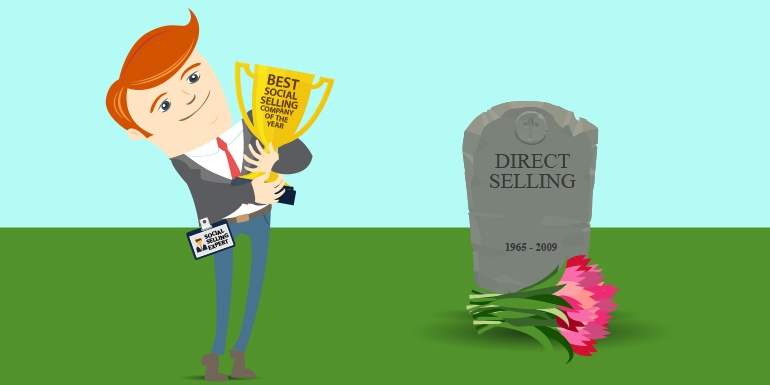
- Home
- Best Practices
- A Giant Leap from Direct Sales to Social Selling - Part 2
A Giant Leap from Direct Sales to Social Selling - Part 2
Published :

STONE AGE to DIGITAL AGE - Social Selling – With a Selling HERO
In furtherance to my previous blog post on ‘A Giant Leap from Direct Sales to Social Selling’, here is a sequel on TIPS to be a strong social selling organization.
In social selling, the emphasis is on "social" - relationship building and connecting with potential buyers before moving on to any sales-related interaction. Gone are the days of “cold calling”…Well said LinkedIn & few other top social sellers gathered at the LinkedIn Social Sales Summit in Singapore! Cold is what is dead and not the calling, as it depends on how contextual you are when connecting with your prospects. But where do you get the context?
The transition from direct selling to social selling is however not easy without a valid assist tool. LinkedIn's Sales Navigator (LSN) strives to simplify this concept of social selling and opens up the entire business ecosystem to build meaningful connections.
The proof of the pudding is in the eating - assessing effectiveness of social selling
Is social selling a passing fad? What do the organizational statistics indicate?
A few research reports state that more than 60% of organizations who adopted social selling have enjoyed a tremendous increase in their sales revenue. About 50% of the sales process is cleared digitally through social selling even before the first call between the sales person and the prospect. That's certainly great news! But how many organizations are willing to change?
How will you measure the effectiveness of social selling? WHATIF you had a report card to measure to effectiveness of every sales person’s social selling skills?
The social selling index in Sales Navigator solves this problem by serving as an internal report card of sales performance, providing information on the top scorer.
Now I am sure all of us will agree managing a sales workforce in any organization is no mean task. You will have sales professionals who cross the lines of being commandos to cold mercenaries. Commando is used more with a positive intent as they know how to go after the target and meet the numbers with some broad rules of an organization design. Mercenaries, although they do something similar , they do it in a more cold manner , while the intent of usage here is in a negative tone , they too will the job get done albeit with a selfish motive of making money and beyond the rules of an organization. Different ways of managing a sales organization and a couple of tips which have been leveraged to get us where we are as the top social selling organization [View PR] are ensuring the below best practices:
Adhering to the above best practices has helped Ramco streamline our sales process. In addition to these, there were several insights gathered at the LinkedIn Social Sales Summit in Singapore where the top social sellers & users had gathered together to share thoughts & trends in social selling. The video footages of the same will shortly be published.
Are you ready for the digital era of social selling?
Enterprise asset management (EAM) involves the management of mission critical assets of an organization throughout each asset's lifecycle. EAM is used to plan, optimize, execute, and track the needed maintenance activities with the associated priorities, skills, materials, tools, and information. The aim is to optimize the quality and utilization of assets throughout their lifecycle, increase productive uptime and reduce operational costs.
Enterprise asset management (EAM) involves the management of the maintenance of physical assets of an organization throughout each asset's lifecycle. EAM is used to plan, optimize, execute, and track the needed maintenance activities with the associated priorities, skills, materials, tools, and information.
The software helps in effective maintenance of assets through preventive, predictive, shutdown and breakdown maintenance strategies. The system also helps enterprises mitigate equipment risks by enhanced safety standards. The streamlined operations and improved asset performance helps organizations increase their investment effectiveness.
EAM is important because it helps organizations track, assess, manage and optimize asset quality and reliability. Asset intensive Organizations have hundreds, thousands, even millions of assets which needs to be maintained to maximize / optimize life of these assets to increase the return on investment.
The key features of effective EAM are:
Asset Intensive companies under the following Industries :
Contact us for a meeting and schedule a demo
This differs on case to case basis, based on the type of installation and unique industry specific requirements. Contact us for a meeting and schedule a demo.
This differs on case to case basis, based on the type of installation and unique industry specific requirements. Contact us for a meeting and schedule a demo.
Stay Connected, follow us on LinkedIn / Twitter to know more about EAM Software latest trends.
All Rights Reserved. © Copyright 2024. Ramco Systems.